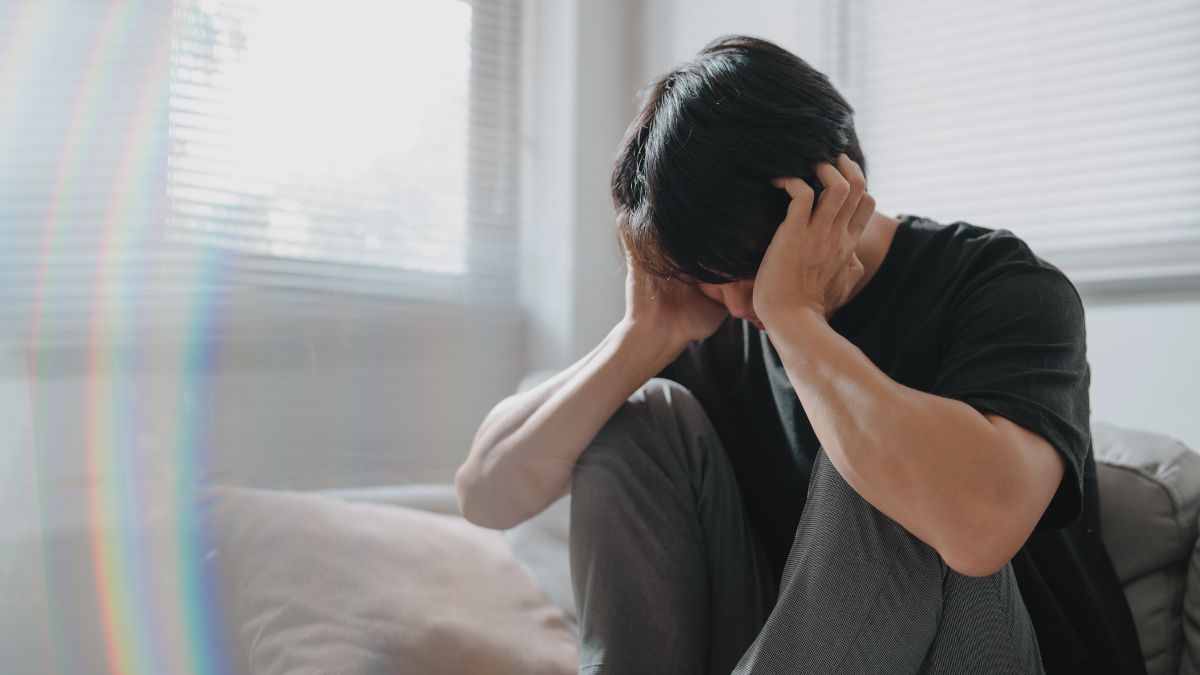Using Body Scans for Anxiety and Restlessness

Anxiety often shows up in the body before it reaches the mind. You may feel tightness in your chest, shallow breathing, or a restless urge to move. These physical signs are your body’s way of saying, “I’m overwhelmed.” One gentle way to calm both body and mind is through a practice called a body scan.
A body scan is a simple mindfulness technique that helps you tune in to your body and release built-up tension. It can help ease anxiety, calm racing thoughts, and create a sense of peace—even during stressful moments.
Let’s explore how body scans work, why they’re effective, and how you can use them in everyday life.
What Is a Body Scan?
A body scan is a guided mental check-in with your body, one part at a time. You slowly move your attention from your toes to the top of your head (or vice versa), noticing sensations, tension, and temperature—without judging anything you find.
It’s a mindfulness practice that promotes awareness and relaxation.
Unlike meditation that focuses on the breath or a mantra, a body scan gently draws your attention inward, helping you feel more grounded in the present moment.
Why Body Scans Help with Anxiety
When you’re anxious, your thoughts often spiral into the future—what could go wrong, what you should do, or how to avoid discomfort. This mental overload activates your sympathetic nervous system, also known as the “fight or flight” response.
A body scan helps shift your brain from this reactive state into the parasympathetic nervous system, also called the “rest and digest” mode. That’s where healing, calming, and recovery happen.
A 2021 study published in Mindfulness found that body scan meditation significantly reduced anxiety levels and improved emotional regulation in participants after just eight sessions (Sanada et al., 2021).
The key is presence. When you focus on your body’s sensations, your mind has less room to dwell on fear or worry.
Benefits of Body Scans
- Reduces physical tension
- Calms racing thoughts
- Improves body awareness
- Promotes better sleep
- Lowers blood pressure and heart rate
- Helps detect emotions stored in the body
Many people don’t realize how much tension they carry in their shoulders, jaw, or back until they pause and check in. A body scan shines a light on these areas, helping you relax them consciously.
How to Do a Simple Body Scan
You don’t need special tools or a lot of time. You can practice a body scan lying down, sitting in a chair, or even standing. Here’s a basic guide:
Step 1: Find a Quiet Spot
Choose a place where you won’t be disturbed. Sit or lie down in a comfortable position. Close your eyes or soften your gaze.
Step 2: Take a Few Deep Breaths
Breathe in slowly through your nose, and exhale through your mouth. Let your body start to relax.
Step 3: Start at Your Toes
Bring your attention to your toes. Notice any sensations—warmth, tingling, pressure, or even numbness. Don’t try to change anything. Just observe.
Step 4: Move Up the Body
Slowly move your awareness upward—feet, ankles, calves, knees, thighs. Then your hips, belly, chest, back, shoulders, arms, hands, neck, face, and head.
Pause for a moment at each body part. Spend more time on areas where you feel tension.
Step 5: Release Tension
As you notice tension, breathe into that space. On the exhale, imagine the tension melting away. If your mind wanders (and it will), gently bring it back.
Step 6: Finish with a Full-Body Check
After scanning each part, take a moment to feel your whole body as one. Notice any shifts. You might feel more relaxed, present, or simply aware.
Tips for an Effective Body Scan
- Be gentle. There’s no right or wrong way to feel. Just observe.
- Go slow. A full scan can take 10 to 30 minutes.
- Practice regularly. Even a few minutes daily can make a big difference.
- Use guidance. Apps like Insight Timer, Calm, and Headspace offer free guided body scans.
- Try journaling. After your practice, jot down how you feel. This helps track your progress.
When to Use a Body Scan
You can use body scans anytime you feel anxious or overwhelmed. Here are a few helpful times:
- Before bed to calm your mind
- During panic or anxiety attacks
- Before an important event (interview, exam, etc.)
- When you feel disconnected or “out of your body”
- After a long, stressful day
You can even take mini body scan breaks throughout the day—just 2–3 minutes to check in and breathe.
A Personal Story
Jake, 29, struggled with anxiety for years. “I used to wake up with a tight chest and racing thoughts,” he says. “Meditation felt too hard—my mind just wouldn’t stop.”
Then he found body scans. “It gave me something to do while calming down. Focusing on my body helped quiet my thoughts. Now, I start every morning with a short scan. It sets the tone for my whole day.”
Jake’s experience is common. Many people find body scans more approachable than traditional meditation.
Science Backs It Up
In addition to reducing anxiety, body scans improve your connection with your body—something often disrupted by trauma or chronic stress.
A study in Behaviour Research and Therapy found that body scan meditation helped participants with Generalized Anxiety Disorder (GAD) improve mindfulness and decrease negative self-talk (Vøllestad et al., 2011).
These practices don’t just soothe you in the moment—they help build emotional resilience over time.
Final Thoughts
Anxiety doesn’t have to control your life. Small, mindful practices—like the body scan—can help you feel more grounded, calm, and in touch with yourself.
By tuning into your body with kindness and curiosity, you start to build a stronger foundation for emotional wellness. The next time anxiety visits, try a body scan. You may be surprised by how much peace you can find—just by noticing your breath and body.




